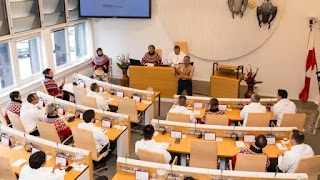Greenland Independence Movement

In 1953 the Danish Constitution officially made Greenland a province of the country but in 1979 had granted the territory home rule which gave it many responsibilities from education to fisheries. In 2008 a referendum was held in relation to how much autonomy Greenland should have with 75% voting in favor of more. The coast guard, legal system and law enforcement were transferred to Greenland. The language was officially changed from Danish to Greenlandic, and Eskimo-Aleut language of the local Inuit. Greenland also received control over in foreign trade. The nation has representatives in Copenhagen, Reykjavik, Brussels and Washington, D.C. A poll in 2016 showed that 64% of the island was in favor of independence but a poll in 2017 showed a stark opposition (74% against) if it meant a lowering in the quality of life. There are two factions within the serparatist movement in Greenland: “slow-independence” and “independence-now”. T...



































